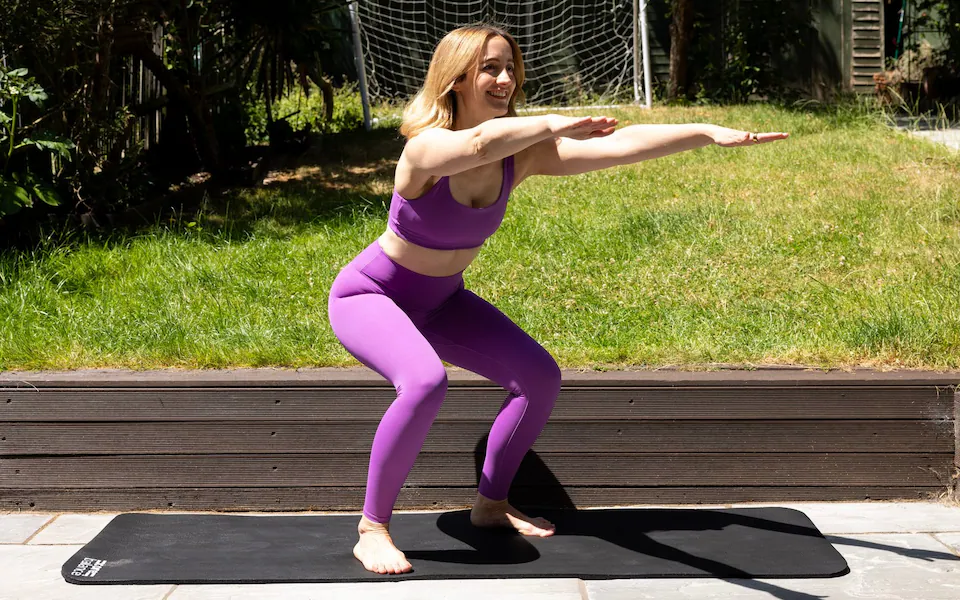A healthy diet is crucial, but to live independently and healthily in old age, you need to maintain a stable vestibular system, muscle strength, and flexibility. According to fitness trainer Caroline Idiens, a specialist in fitness for middle age, we should build a foundation of health as early as possible. The body begins to gradually lose bone density and muscle mass from the age of 35. Research shows that daily exercise is key to slowing down the aging process.
Idiens suggests five simple tests, requiring no complicated equipment, to help you measure your aging rate, assess your current fitness level, and track your improvement progress.
Standing on one leg
Balance is often taken for granted until it starts to decline. Loss of balance is a leading cause of falls and is closely linked to the risk of premature death. To maintain balance, the body needs coordinated interaction between vision, the vestibular system (which registers movement), and the deep sensors in the limbs.
You can test this ability by standing on one leg while tying your shoes or brushing your teeth. Hold onto the sink if you need support. The average balance time gradually decreases with age: 43 seconds (under 40), 40 seconds (40-49), 37 seconds (50-59), 30 seconds (60-69), 18-19 seconds (70-79), and over five seconds (over 80).
 |
Correct plank position, with head and torso in a straight line. Photo: Telegraph |
Correct plank position, with head and torso in a straight line. Photo: Telegraph
Plank
Strong abdominal muscles support the body in everyday activities like carrying children, doing housework, or gardening. Planking is a more effective core strength assessment than sit-ups, helping prevent back pain – a common problem.
How to perform: Place your forearms on the floor, elbows directly beneath your shoulders, and raise your body into a straight line from head to heels. Start with a 10-second goal and gradually increase to 60 seconds. To increase the difficulty, try the military plank (switching between high and low plank) for 30 seconds.
Sit-to-stands
Difficulty getting up from a chair indicates reduced lower body strength, increasing the risk of falls. This test is especially useful for office workers who sit a lot.
 |
Balancing on one leg. Photo: Telegraph |
Balancing on one leg. Photo: Telegraph
How to perform: Use an armless chair with your feet firmly planted on the floor. In 30 seconds, stand up and sit down as many times as possible without using your hands for support. The average number of repetitions indicating good physical condition are:
60-64 years old: 12-17 times (female), 14-19 times (male).
70-79 years old: 10-15 times (female), 11-17 times (male).
Over 80 years old: 8-14 times (female), 8-15 times (male).
Squats with water bottles
This is a functional exercise, simulating everyday movements, which helps improve posture, lower body strength, and balance. Instead of weights, you can hold two full water bottles.
How to perform: Stand with feet wider than hip-width apart, push your hips back, lower into a squat, then stand up straight and push the two water bottles over your shoulders. Start with three sets of 10-12 repetitions each.
Grip strength test
Grip strength is an important indicator reflecting overall health. Weak grip strength is linked to the risk of heart disease, diabetes, and Alzheimer's. This strength is essential for everyday tasks, from opening jars to holding onto railings when losing balance.
To improve, regularly wring out a towel or squeeze a tennis ball. Average grip strength varies with age and gender:
Women (40-50 years old): 22-27 kg.
Men (40-50 years old): 42-49 kg.
Women (50-60 years old): 20-25 kg.
Men (50-60 years old): 39-45 kg.
These five tests not only help you recognize the degree of aging but are also a useful tool to monitor and improve your health, aiming for a more active and independent life in old age.
 |
Squatting. Photo: Telegraph |
Squatting. Photo: Telegraph
Thuc Linh (Telegraph)












